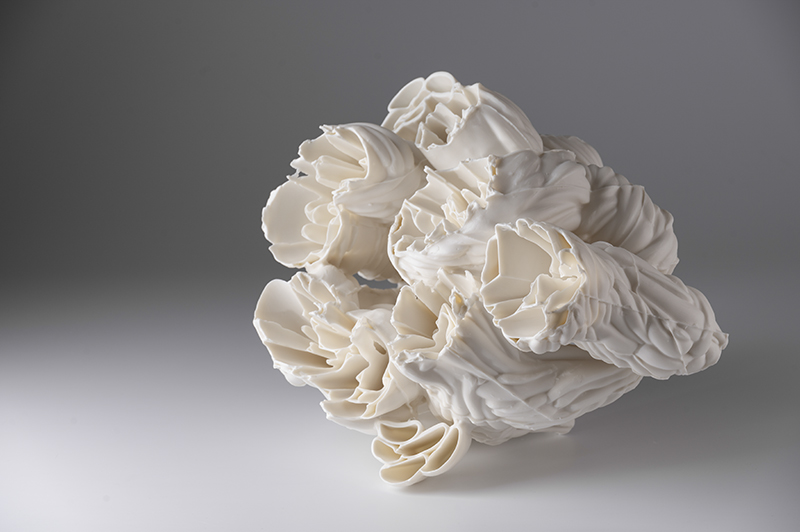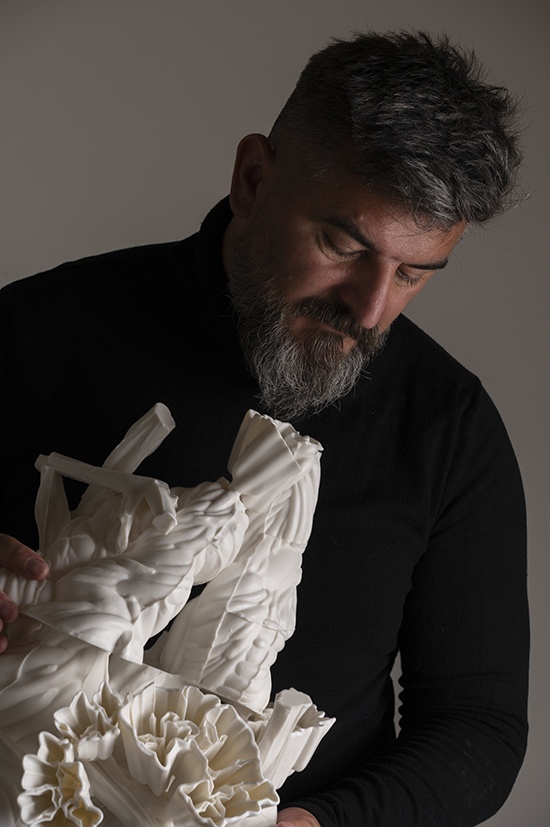
The Breath of Form: Life Imagery in Zsolt József Simon's Ceramics
Hungarian artist Zsolt József Simon creates ceramic sculptures that capture living motion within static form. His works are not merely motionless objects but “border beings” caught in transformation, inviting viewers to connect their still present with dynamic origins. Simon achieves remarkable technical mastery through impossibly thin yet structurally sound ceramic walls, balancing geometric precision with organic forms that evoke flowers, sea creatures, and geological formations.
The sculptures exist at the intersection of resemblance and abstraction, recalling structures from plant and animal kingdoms while evoking microscopic diatoms. A compelling tension characterizes his pieces: dense, ornate exteriors resembling protective nests transition into softly receding interiors filled with mysterious darkness. Simon employs an “imaginary axis” concept to harmonize opposing forces: inward liquid flow against outward radiant sharpness, while subtle color choices enhance meaning—white suggesting bone, yellow indicating flora, gray deepening mystery.
Simon’s luminous creations challenge viewers to perceive vitality within stillness, rewarding active engagement with inexhaustible visual experiences. His sculptures explore profound questions about transformation and the essence of life, offering a philosophical dialogue on static forms embodying living energy. In the following conversation, Zsolt József Simon delves into the philosophy, process, and aesthetic vision that animate his compelling creations.
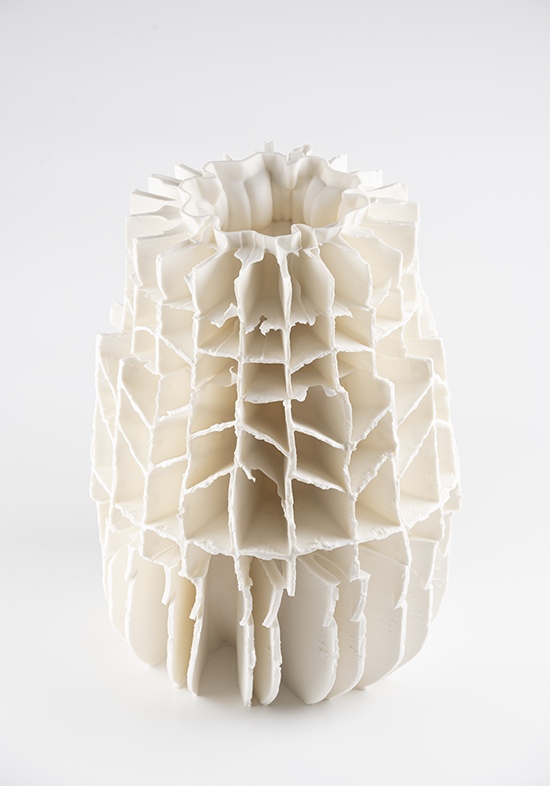
Q: Your work explores the tension between static objects and the “living motion” they seem to contain. Could you elaborate on this?
A: When working in spatial arts like sculpture, unlike time-based arts such as music or theatre, the finished objects are fundamentally unchanging – akin to fossils capturing a moment. They embody a transformation that has become static, a kind of “dead” change. The viewer’s task, then, is not simply to observe, but to engage actively, to perceive beyond this stillness and seek the originating intention, the liveliness embedded within, relying solely on visual perception. This isn’t about projecting fantasies, but about attempting to truly know the object. Unconsciously, we immerse ourselves in forms and colours, almost “dressing” ourselves in them, moving into them as we look. My preference leans towards forms suggesting imminent unfolding, like a bud about to burst, rather than the inertness of a perfect cube – a preference I believe is visible in my objects.
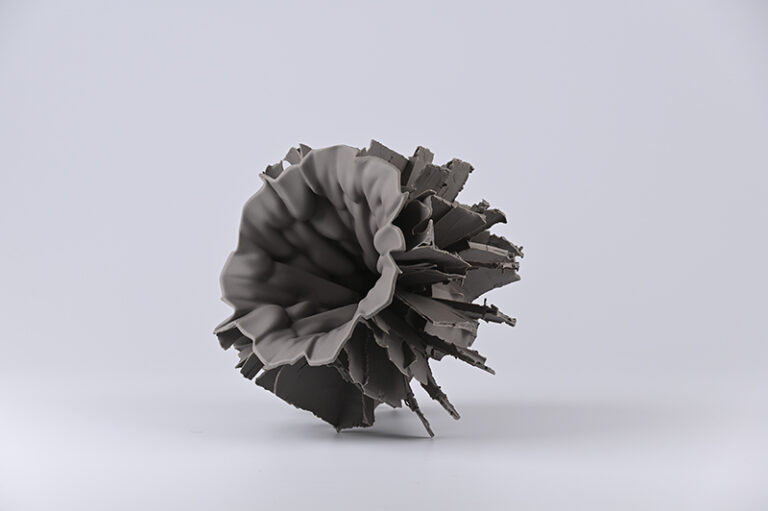
Q: How do you believe art can bridge the perceived gap between the inanimate and animate worlds?
A: I contend there isn’t truly a gap, but rather a continuous, albeit one-way, connection: the living constantly produces and sheds the inanimate. Think of hair, nails, or dried skin – remnants cast off, similar to how ancient sea creatures’ skeletons formed limestone mountains. Life perpetually solidifies into the non-living. Humans, uniquely, possess a developing consciousness that allows us to channel energies beyond mere physical survival towards personal or collective growth. The artist wrestling with physical material exists within this rhythm, this pulsation between living creation and the resulting permanent, “dead” object that emerges. Art, in this sense, rhythmically intertwines the process of living creation and the “falling into the dead” in the present moment. It’s a journey punctuated by valuable attempts, not just waiting for one final, perfect piece. While art cannot literally bring the dead to life, in sculpture, we can attempt to organize inanimate, mineral material – often characterized by straight lines and angles – into the forms evocative of life, gifting it with that resonance. The pinnacle of this aspiration can perhaps be seen in the masterful statues of Greek art.
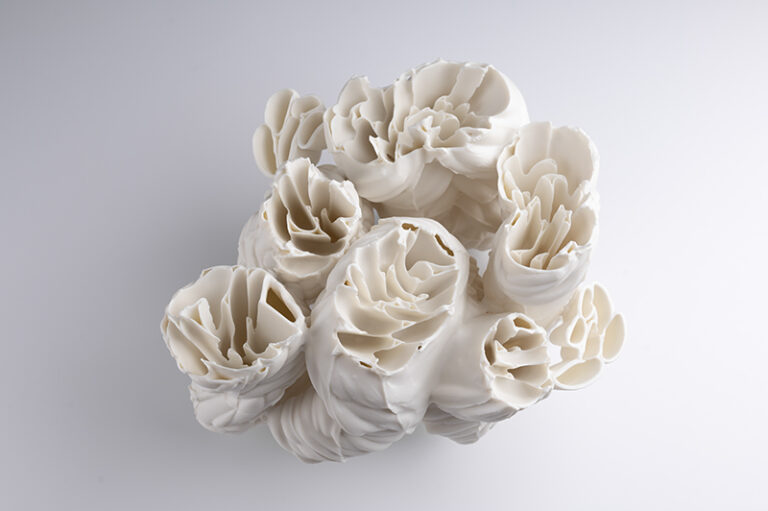
Q: What is your artistic training background, and how did you discover the distinctive path that led to these “border-beings” and your current aesthetic approach?
A: My studies were quite diverse, including porcelain painting, Bothmer gymnastics, drama, painting, and vocal improvisation, culminating in BA and MA degrees in porcelain from MOME (Moholy-Nagy University of Art) and teacher training. A crucial moment came during my fourth year of university when I had to honestly assess my core interest. The answer was surprisingly specific: the texture left by saw teeth on plaster, and the act of sawing itself. Though perhaps not conventionally “lofty,” I felt this honest direction held the greatest potential energy. This initiated a long period of experimentation, initially with wildly shaped plaster elements and porcelain. Eventually, fellow artists pointed out the emergence of soft, rounded forms alongside the fragmented, sharp surfaces that had first captivated me. This marked presence of opposing qualities necessitated an organizing principle to prevent the objects from tearing themselves apart – a way to achieve harmony. I realized that the extreme tension within the surface elements needed a counterpoint: a calming, circularly symmetrical arrangement for the basic form. The surfaces were intentionally exaggerated, overfilled with activity; this required balancing with a quieter overall contour. Consequently, the center of my objects is often air, an imaginary axis. This shell-like structure, unlike solid stone, arises partly from technique, but looking inside reveals a centripetal tendency that remains ultimately unfilled by material.
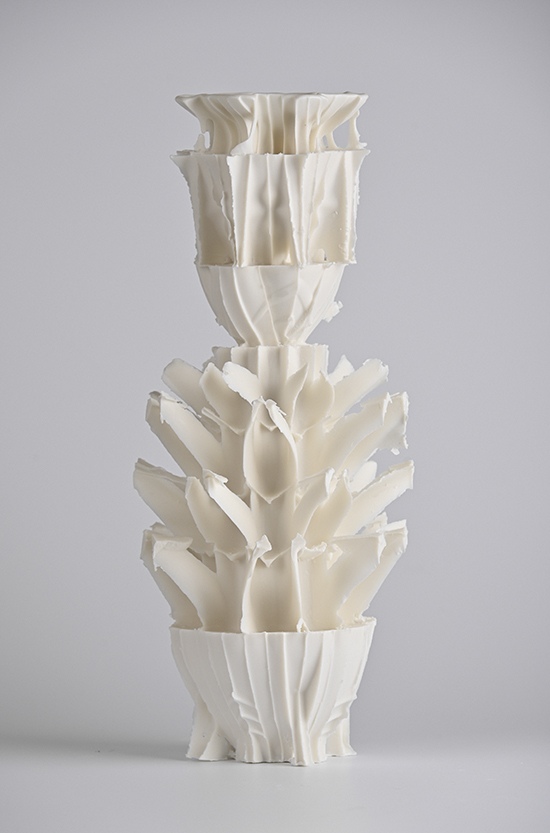
Q: The duality of inward and outward movement appears central to your work. How does this reflect your philosophical understanding of creation and existence?
A: Life, and therefore creation, arises from the interplay – the wrestling or marriage – of opposing forces. It’s a natural aspiration to recognize extremes in parity, define them through each other, and then move towards a mediating, independent third state that holds more value. It’s a balancing act, like dancing on a razor’s edge between potent forces. Rather than a simple battle of good versus evil, looking beyond the binary pull towards a third way can yield fruitful change. My objects can be seen as vessels, defined by their shell-like nature – a wall creating an inside and an outside. However, particularly in my “Flying Garden” series, this shell-like boundary becomes ruffled, activated both inwards and outwards. It doesn’t seal off internal from external but allows them to inter-pulsate; the border itself becomes alive. Consider the earth’s surface: barren, it’s a hard boundary where sky meets mineral. But where plants grow, they embroider this boundary, reaching up with stems and leaves, down with roots, weaving earth and sky together. Animals take this further, becoming independent mineral complexes with their own outlines, their own inner worlds. This perspective perhaps illuminates the “Flying Garden” title and why the objects feel like creatures teetering on the threshold between plant and animal existence.
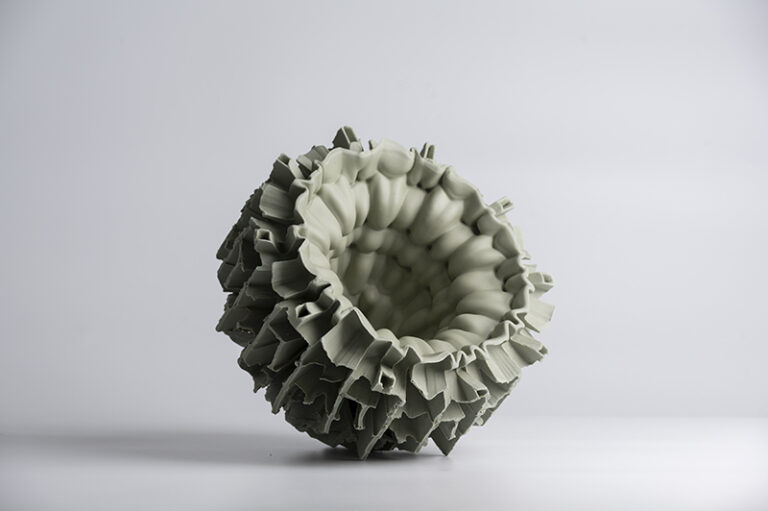
Q: Your text mentions “an imaginary axis” that maintains unity between opposing streams. How does this concept of balance manifest in your creative process?
A: As touched upon earlier [in response to Q3], the intense activity and tension created by contrasting sharp and soft surface elements demanded a harmonizing principle. The “imaginary axis” represents the circularly symmetrical arrangement I employ. This radial symmetry acts as a calming influence on the overall form, providing a quieter contour and a sense of unity that contains and balances the dynamic, often contradictory, energy of the surfaces, preventing the piece from feeling visually torn apart. It’s the necessary counterpoint that allows complexity to resolve into a cohesive whole.
Q: You write about “active darkness suggestive of secrets.” What role does mystery play in your artistic expression, and what do you hope viewers discover in these hidden spaces?
A: The state of “almost” inherently holds possibilities. Uncertainty, conjecture, vagueness – these are territories particularly suited to art. They encourage the viewer, like the artist, to engage in that changeable search for a middle ground. This is why I avoid excessive precision and the dominance of mathematically perfect forms. Between raw, instinctual chaos and precisely defined order lies a vast playground for the artist. The fragmented surfaces of my objects offer a rich palette of light and shadow, inviting the eye to roam. This interplay keeps alive the viewer’s (perhaps unconscious) questioning of the object’s true outline, the precise boundary between inside and out, thus engaging them in the mystery.
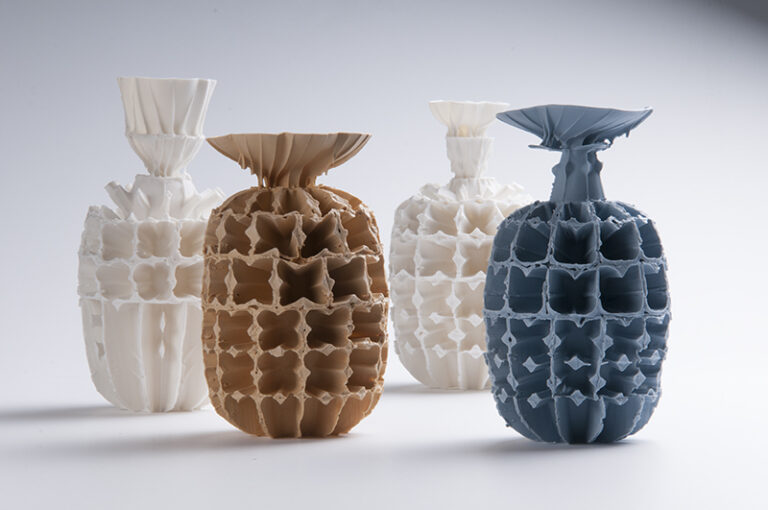
Q: The interplay between plant and animal characteristics seems significant in your work. How do you see humanity’s relationship with these kingdoms informing our understanding of ourselves?
A: Echoing our earlier discussion [in response to Q4], the way life forms mediate boundaries is key. Plants weave together the earth and sky, making their meeting point permeable. Animals internalize this complex, developing distinct outlines and inner worlds while still being connected to the environment. My objects, hovering aesthetically between plant and animal states, reflect this intermediacy. Humanity, too, exists in relationship to these other kingdoms, partaking of both mineral solidity and organic dynamism, possessing both an outer form and a complex inner world. Understanding how we relate to the perceived simplicity of the mineral, the rooted growth of the plant, and the mobile sentience of the animal can undoubtedly inform our understanding of our own multi-layered existence and consciousness.
Q: Your description mentions color as a guide for imagination – white suggesting bone, yellow evoking flowers or fruit, gray bringing darkness forward. How deliberate is your use of color symbolism in communicating meaning?
A: I tend not to think of colors strictly as symbols, but rather as carriers of direct, vivid effects that resonate universally – something advertising professionals well understand. Most of my pieces utilize slightly warmer shades of white. This choice best complements the forms I work with, allowing the spatial qualities, revealed through light and shadow, to take precedence. I find that more muted earth tones and cement-like grays modify the objects subtly, without distracting from the core formal composition. These colors also lend a certain visual weight, helping to ground the sculptures.
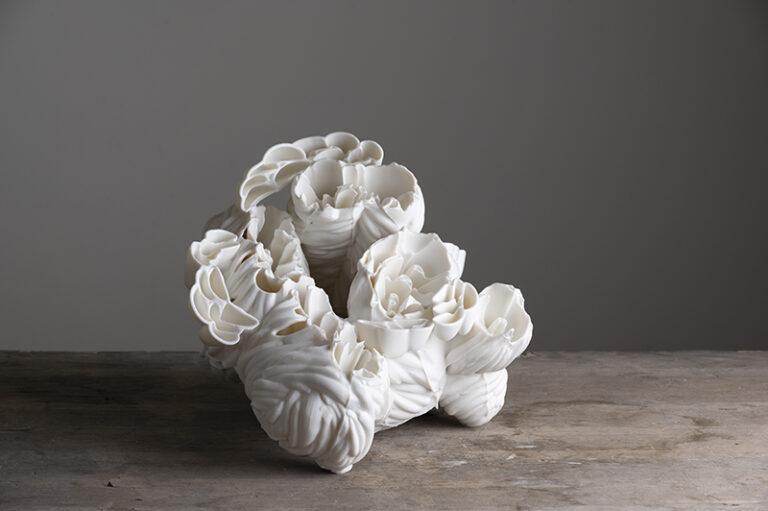
Q: You refer to “fruitful preservation of extremes.” In what ways do you see contradiction and tension as necessary components of beauty?
A: For me, the primary question isn’t necessarily whether tension is required to create beauty. It’s more about maintaining a far-reaching interest and sensitivity, allowing diverse, sometimes contradictory experiences to serve as raw material, while simultaneously upholding a conscious striving towards beauty. From this viewpoint, seemingly contradictory variety acts as fuel, as a driving force. The pursuit of beauty, however, is independent of this – it’s the result of a free decision, a goal pulling from the future. Tension and beauty don’t automatically equate, but they can certainly be connected. Catharsis arises from drama, but not every drama achieves catharsis; similarly, tension can be harnessed in the service of beauty, but doesn’t guarantee it.
Q: The title “Inexhaustible” suggests endless renewal. How does your work engage with concepts of regeneration, mortality, and timelessness?
A: I hope viewers can discern within my works a sense of movement evoking continuous renewal – a pulsation that alternately opens and closes, ebbs and flows, seemingly dies and is resurrected. There are inherent limits in physical form: one cannot penetrate deeper than the center, where form must yield, nor can it extend infinitely outwards; it must be delimited. Yet, through elements like the darkening center or the overhanging “wing-like” protrusions, there’s an allusion to these infinite tendencies, a striving towards opposing poles that extends beyond the physical boundaries of the sculpture itself, hinting at processes of regeneration and dissolution that transcend the static object.
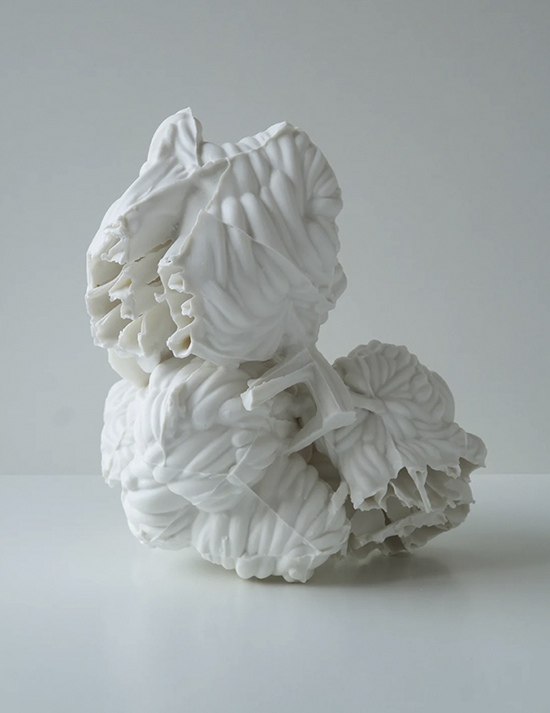
Q: You speak of an “endeavor aimed at beauty.” In a contemporary art world that often prioritizes concept over aesthetics, how do you define beauty and why do you consider it a worthy pursuit?
A: One should strive for what is sublime, what is worthy of aspiration. When I consider the world I wish to see reflected, I endeavor to create accordingly. In art, I find beauty to be the most sublime ideal I can pursue. Experiencing beauty is uplifting. It’s perceived primarily with the soul, the realm from which art itself largely originates and through which it resonates most deeply. An overemphasis on concept can lead to a dominance of intellect in art. While thinking and willpower are crucial components, I believe the capacity to be emotionally moving is paramount. The contemporary art landscape often features boundary-pushing through individual artists – some explore raw instinct, others prioritize conceptual frameworks, and some engage in superficial aestheticism. Ideally, our hands would be skillful, our thoughts wise, and our souls dedicated to beauty, but reality is far more nuanced. Today, seemingly anything can appear in art; it feels like a protracted moment preceding a potential new birth for art, ongoing since the early 20th century. It’s a period of accumulating diverse strengths and approaches. The future of art rests with us artists and those influencing its direction. There’s a struggle even for art’s future trajectory. I firmly believe that hard-won beauty, achieved through navigating complexity and tension, holds a vital place in that future.
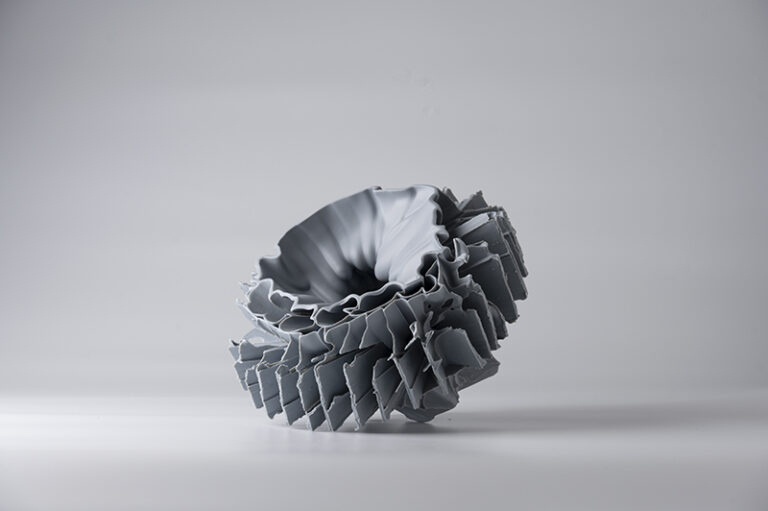
Conclusion
Through this insightful dialogue, Zsolt József Simon revealed the deeply integrated artistic language and philosophical contemplation underlying his work. His creations, termed “boundary creatures,” not only push the limits of ceramic media but also serve as profound meditations on existence itself. Positioned between stillness and movement, between the tangible and the enigmatic, he constructs a unique perceptual space in which viewers continuously cross boundaries, experiencing vitality within form.
In an art world increasingly dominated by conceptualism, Simon’s dedication to beauty acts as a lucid reminder. His art is concerned not merely with form but seeks unity within complexity, awakening perception through silence. He guides us into an artistic realm where stillness breathes, sculptures grow, and beauty, as an enduring value, continues to shine.
